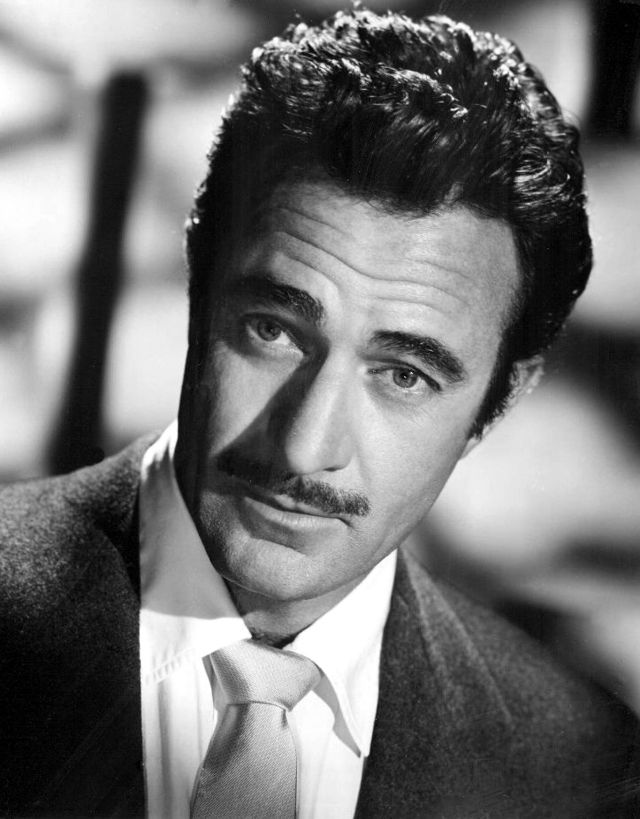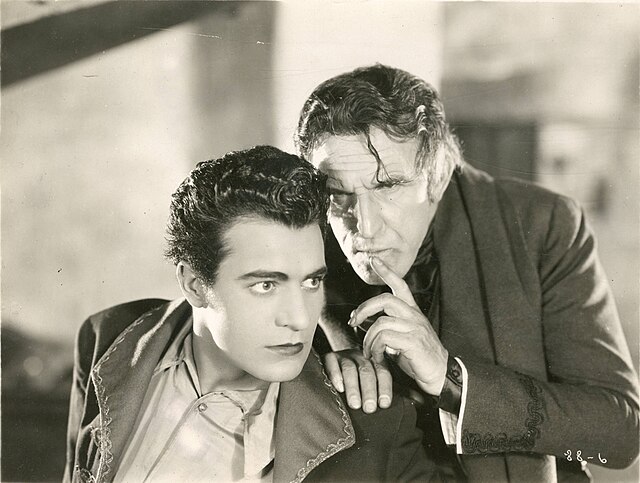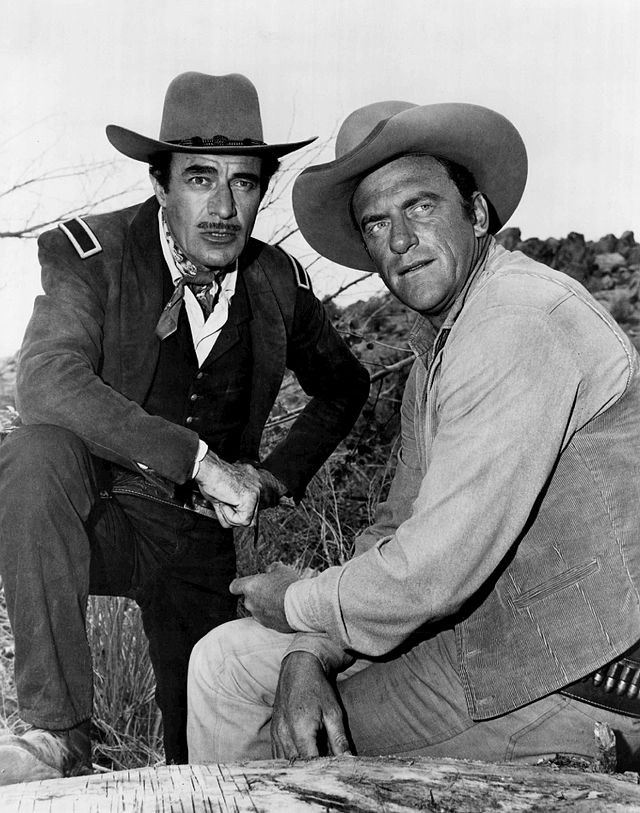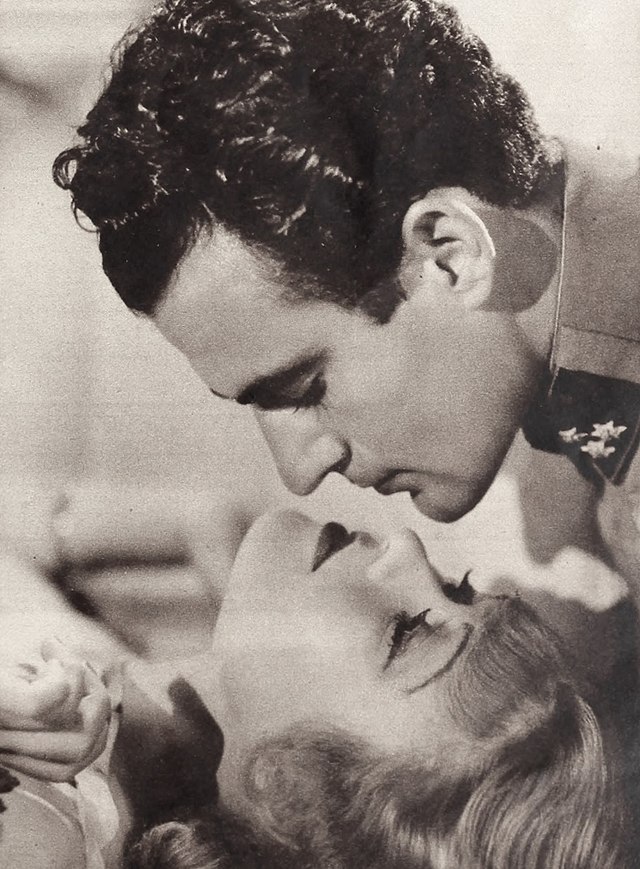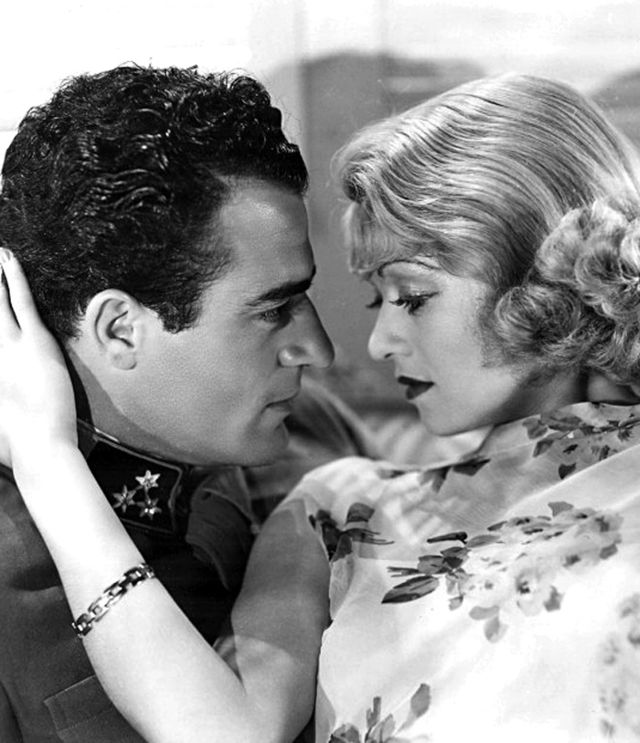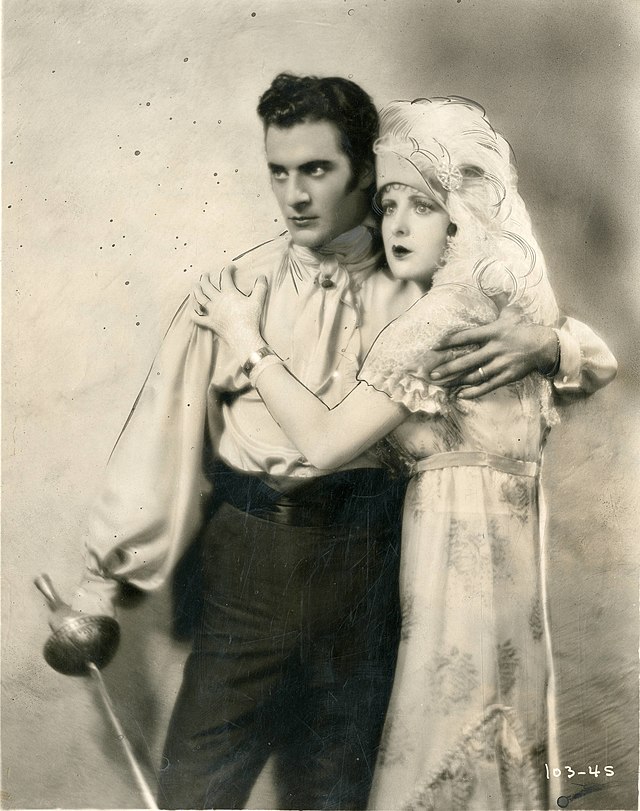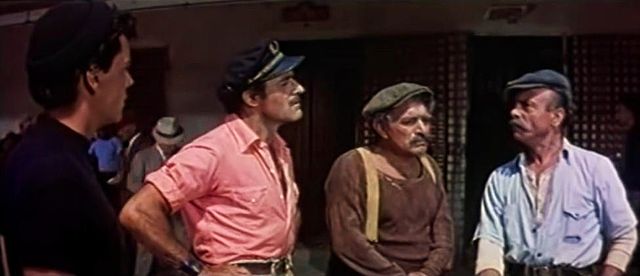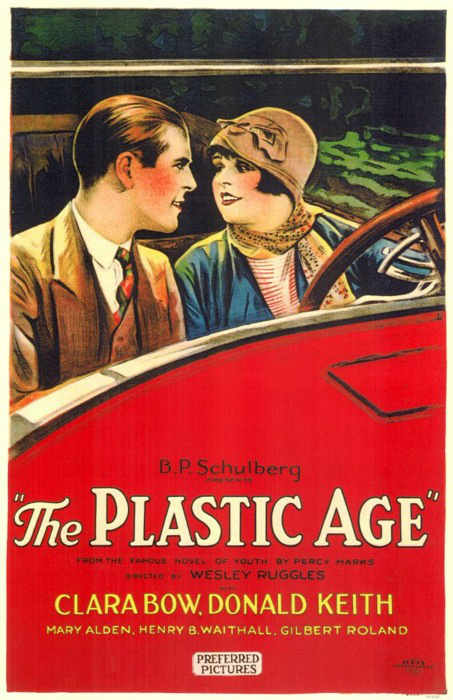Gilbert Roland
back| Full Name | Luis Antonio Dámaso de Alonso |
| Stage Name | Gilbert Roland |
| Born | December 11, 1905 |
| Birthplace | Ciudad Juárez, Chihuahua, Mexico |
| Died | May 15, 1994 |
| Buried | Forest Lawn Memorial Park, Glendale, California, USA |
| Married to | Constance Bennett (1941–1946) - Guillermina Cantu (1954–1994, until his death) |
| Children | 2 daughters with Constance Bennett - Lorinda Roland and Christina Roland |
| Notable films | The Sea Hawk (1924) - The Plastic Age (1925) - The Last Train from Madrid (1937) - Thunder Bay (1953) - Around the World in 80 Days (1956) - Cheyenne Autumn (1964) |
Gilbert Roland
The Latin Lover
Gilbert Roland was a pioneering Mexican-American actor whose career spanned from the silent film era to the 1980s. Renowned for his charismatic presence and versatility, Roland excelled in roles ranging from romantic leads to complex characters.
Notable films include "The Sea Hawk" (1924), "The Bad and the Beautiful" (1952), and "Around the World in 80 Days" (1956). He earned a Golden Globe nomination and a star on the Hollywood Walk of Fame. Roland's sophisticated style, emotional depth, and dedication to his craft made him a respected figure in Hollywood.
Married to Constance Bennett and later Guillermina Cantu, he had two daughters. Roland passed away on May 15, 1994, leaving a legacy of breaking barriers for Latin actors in Hollywood.
Related
Gilbert Roland (1905 – 1994)
Biography and Movie Career:
Gilbert Roland was a Mexican-American actor who carved a notable career in Hollywood, spanning from the silent film era to the advent of television. Born Luis Antonio Dámaso de Alonso in Ciudad Juárez, Chihuahua, Mexico, Roland moved to the United States with his family during the Mexican Revolution.
His original ambition was to become a bullfighter, but circumstances led him to the silver screen. Adopting the stage name Gilbert Roland, inspired by his favorite actors John Gilbert and Ruth Roland, he quickly made a name for himself in the film industry. His good looks and charm helped him land numerous roles, often portraying Latin lovers and swashbuckling heroes.
Roland's career took off in the 1920s with roles in silent films such as "The Sea Hawk" (1924) and "The Plastic Age" (1925). He successfully transitioned to talkies and appeared in a wide range of films across various genres. Some of his notable works include "The Bad and the Beautiful" (1952), where he played a washed-up actor, and "Around the World in 80 Days" (1956), a critically acclaimed adventure film.
In addition to his film career, Roland also made appearances on television, including guest roles in popular series such as "Zorro," "Bonanza," and "The Wild Wild West."
Roland was married twice, first to actress Constance Bennett, with whom he had two daughters, and later to Guillermina Cantu, remaining together until his death. Known for his suave demeanor and distinctive accent, Gilbert Roland left an indelible mark on Hollywood.
He passed away on May 15, 1994, at the age of 88. His final resting place is at Forest Lawn Memorial Park in Glendale, California. Gilbert Roland's legacy continues to be celebrated for his contributions to the film industry and his ability to captivate audiences with his performances.
Video Tribute to Gilbert Roland:
Personal Quotes:
On his career longevity:
"I've been in pictures for over forty years, and I think it's because I always try to give a good performance. I'm very professional about my work."
On his philosophy of acting:
"I believe in living the part, not just acting it. If you can live the role, the audience will believe you."
On his early career and transition to Hollywood:
"I came to Hollywood with my bullfighting costumes and my bullfighting cape. But I soon realized that the real fight was in the movies."
On his love for acting:
"I love acting. It's an escape from reality. When you act, you can be anybody, live anywhere, and do anything."
On his Mexican heritage and identity:
"I am proud to be a Mexican, and I am proud to have represented my people in the movies."
Reflecting on his experience in Hollywood:
"Hollywood has been good to me. I have had a wonderful career, and I have worked with some of the greatest actors and directors."
On his role in 'The Bad and the Beautiful':
"That role was very special to me. It showed that I could do more than just play the Latin lover; I could be a serious actor."
On his perspective on life:
"Life is like a movie. You have to keep the audience entertained, and you have to give your best performance every day."
Charismatic Acting Style of Gilbert Roland:
Gilbert Roland's acting style is a unique blend of charisma, suave sophistication, and passionate intensity.
Charismatic Presence:
Roland had a natural screen presence that commanded attention. His tall, athletic frame and striking good looks contributed to his magnetic appeal. He exuded confidence and charm, making him a natural fit for leading roles, particularly those of romantic heroes and dashing adventurers.
Emotional Depth:
Roland's performances were marked by a profound emotional depth. He had the ability to convey a wide range of emotions, from passionate love and intense anger to deep sorrow and contemplative introspection. His expressive eyes and subtle facial expressions often conveyed more than his words, adding layers of complexity to his characters.
Versatility:
Throughout his career, Roland demonstrated remarkable versatility. He effortlessly transitioned between different genres, including drama, romance, adventure, and comedy. Whether playing a swashbuckling pirate, a romantic lead, a rugged cowboy, or a villain, Roland brought authenticity and nuance to each role.
Authenticity:
Roland’s performances were rooted in authenticity. He often drew on his own experiences and cultural background to bring depth and realism to his characters. This was particularly evident in his portrayals of Latin lovers and characters with a strong connection to their heritage.
Smooth Sophistication:
Roland’s acting style was marked by a smooth sophistication. He had a natural elegance and grace that made his performances seem effortless. His refined mannerisms and polished delivery added a touch of class to his roles, making his characters both relatable and aspirational.
Strong Physicality:
Roland was known for his strong physical presence and athleticism. He often performed his own stunts and brought a physicality to his roles that enhanced the action and adventure elements of his films. His fencing scenes and fight sequences were executed with precision and flair, showcasing his agility and strength.
Vocal Expressiveness:
Roland’s deep, resonant voice was a key element of his acting style. His vocal delivery was marked by clarity, emotion, and a melodic quality that made his dialogue memorable. He could convey tenderness, authority, menace, or humor with equal effectiveness, making his characters' voices as compelling as their physical appearances.
Subtle Humor:
Even in serious roles, Roland had a knack for incorporating subtle humor. His playful wit and charming smile often added a lighthearted touch to his performances, making his characters more relatable and endearing to audiences.
Commitment to Roles:
Roland was deeply committed to his craft and took his roles seriously. He prepared meticulously for each character, often immersing himself in the historical and cultural contexts of the stories he portrayed. This dedication to authenticity and detail elevated his performances and earned him respect in the industry.
Romantic Idealism:
Many of Roland’s most memorable roles were romantic leads, where he portrayed the ideal lover—passionate, devoted, and gallant. His chemistry with leading ladies was palpable, and he brought a sense of idealism and sincerity to his romantic scenes, making them both believable and moving.
In summary, Gilbert Roland’s acting style was a harmonious blend of charisma, emotional depth, versatility, sophistication, and authenticity. His ability to connect with audiences on a visceral level, combined with his natural elegance and strong physical presence, made him a standout performer in Hollywood’s golden era. Roland’s legacy endures as a testament to his talent and his contributions to the art of acting.
Awards and Recognition:
Golden Globe Awards:
- 1952 Nominee: Best Actor in a Supporting Role for "The Bad and the Beautiful" – This nomination recognized his powerful performance as Gaucho, a washed-up actor who becomes part of a film project.
Walk of Fame:
- 1960: Gilbert Roland was awarded a star on the Hollywood Walk of Fame, located at 6730 Hollywood Boulevard, in recognition of his significant contributions to the motion picture industry.
Venice Film Festival:
- 1958: Volpi Cup for Best Actor for "The Last of the Fast Guns" – Although he did not win, his performance in the film was acknowledged by the prestigious Venice Film Festival.
Additional Honors:
Golden Boot Awards:
- 1988: Gilbert Roland received the Golden Boot Award, which honors actors, actresses, and crew members who have made significant contributions to the genre of Western films.
Legacy:
While Gilbert Roland may not have amassed a large collection of awards, his impact on the film industry and his lasting legacy are undeniable. His star on the Hollywood Walk of Fame and his Golden Globe nomination are testaments to his talent and the mark he left on Hollywood. Roland's career is celebrated more for its breadth, the diverse range of roles he portrayed, and his enduring appeal as a leading man in both silent films and talkies. His contributions to cinema, particularly in portraying complex and compelling Latin characters, have earned him a lasting place in the annals of film history.
What others said about Gilbert Roland:
· John Huston (Director):
"Gilbert Roland brought a unique charisma and depth to his roles. He had a way of making every character he played come alive with authenticity and charm."
· Jane Russell (Actress):
"Gilbert was a true gentleman and a wonderful actor. Working with him in 'The French Line' was a pleasure. He had an incredible presence on screen."
· Anthony Quinn (Actor):
"Gilbert was one of the pioneers for Latin actors in Hollywood. He broke down barriers and paved the way for many of us. His performances were always captivating."
· Variety (Magazine):
"Roland’s performance in 'The Bad and the Beautiful' is a standout. He brings a gravitas and emotional intensity to the role that elevates the film."
· Howard Hawks (Director):
"Gilbert had a natural ease in front of the camera. He could convey complex emotions with just a look or a subtle gesture. He was a director's dream."
· Bosley Crowther (Film Critic, The New York Times):
"Gilbert Roland’s suave demeanor and expressive acting made him a favorite of the silver screen. His versatility allowed him to excel in a variety of genres, from swashbuckling adventures to intense dramas."
· Lana Turner (Actress):
"Gilbert was a consummate professional. He brought such passion to his roles, and his dedication was inspiring. He was a joy to work with."
· Leonard Maltin (Film Critic):
"Roland’s career spanned decades, and he remained relevant through changing times in Hollywood. His ability to adapt and his consistent performances earned him a place among the greats."
· Jeanine Basinger (Film Historian):
"Gilbert Roland was one of those rare actors who could effortlessly move between leading man and character actor roles. His contributions to Hollywood are significant, especially for Latin representation."
Movies featuring Gilbert Roland:
1923
- "The Hunchback of Notre Dame" (Uncredited): A silent film adaptation of Victor Hugo's novel about Quasimodo, the deformed bell ringer of Notre Dame, and his love for the beautiful gypsy Esmeralda.
1924
- "The Lady Who Lied": A romantic drama about a woman whose deceit leads to a complex web of relationships and misunderstandings.
- "The Sea Hawk": A swashbuckling adventure about an Englishman turned pirate, based on Rafael Sabatini's novel.
1925
- "The Spaniard": A romantic drama where a bullfighter falls in love with a high-society woman.
- "The Midshipman": A coming-of-age story set at the United States Naval Academy.
- "The Plastic Age": A romantic comedy-drama about the college life and loves of a young man, based on the novel by Percy Marks.
1926
- "Pals First": A drama involving complex friendships and romantic entanglements.
- "The Blonde Saint": A romantic adventure about a carefree artist and his relationship with a high-society woman.
- "Camille": A romantic drama about a doomed love affair between a Parisian courtesan and a young nobleman.
1927
- "The Love Mart": A historical romance set in New Orleans about a French noblewoman and a dashing pirate.
- "The Fire Brigade": An action-packed drama focusing on the heroic efforts of firemen.
1928
- "The Dove": A romantic drama about a dance hall girl and her complicated love life.
1929
- "The Rescue": An adventure film based on Joseph Conrad's novel, involving a love triangle in the jungles of Southeast Asia.
- "New Orleans": A drama about the lives and loves of people in the vibrant city of New Orleans.
1930
- "Men of the North": A drama set in the Canadian wilderness about a Mountie and his love for a fur trader's daughter.
- "The Woman Racket": A crime drama involving a police detective and his romance with a woman involved in a criminal racket.
- "The Sea Bat": A thriller about a young woman who seeks revenge on a sea creature believed to have killed her brother.
1931
- "Mr. Robinson Crusoe": A comedic take on the Robinson Crusoe story, featuring an eccentric millionaire who decides to live as a castaway.
1932
- "The Woman in Room 13": A crime drama about a woman trying to escape her past and a detective who falls in love with her.
1933
- "Our Betters": A comedy-drama about American heiresses marrying into the British aristocracy.
- "As You Desire Me": A drama about a woman with amnesia and the man who tries to help her remember her past.
1934
- "The Captain Hates the Sea": A comedy-drama about the intersecting lives of passengers on a luxury liner.
1935
- "She Couldn't Take It": A comedy about a wealthy family's misadventures and the reporter who tries to expose them.
1936
- "Robin Hood of El Dorado": A historical adventure about a Mexican outlaw who becomes a folk hero in California.
- "A Message to Garcia": A war drama about a soldier's dangerous mission during the Spanish-American War.
1937
- "Thunder Trail": A Western about two brothers on opposite sides of the law.
- "The Last Train from Madrid": A war drama set during the Spanish Civil War, focusing on a group of people trying to escape the conflict.
1938
- "Goldwyn Follies": A musical comedy featuring various acts and sketches.
- "King of the Turf": A drama about the horse racing industry and the lives of those involved in it.
1939
- "The Man Who Dared": A drama about a man who stands up against corruption in his small town.
1940
- "Rangers of Fortune": A Western about three drifters who become heroes when they stand up to a corrupt land baron.
- "Isle of Destiny": An adventure film about a pilot who crash-lands on a South Seas island.
1941
- "My Life with Caroline": A comedy about a wealthy couple with a tumultuous relationship.
- "Northwest Rangers": A Western about a Mountie and his quest for justice.
1942
- "The Moon and Sixpence": A drama based on the novel by W. Somerset Maugham, about an artist who leaves his family to pursue his passion.
1943
- "For Whom the Bell Tolls": A war drama based on Ernest Hemingway's novel, about an American fighting in the Spanish Civil War.
1944
- "Beauty and the Bandit": A Western about a masked outlaw who fights for justice.
1945
- "The Cisco Kid Returns": A Western about the adventures of the Cisco Kid and his sidekick.
- "The Gay Cavalier": A Western featuring the Cisco Kid as he helps a wronged man clear his name.
1946
- "South of Monterey": A Western about the Cisco Kid's efforts to help a rancher.
- "Riding the California Trail": Another adventure of the Cisco Kid, this time involving a land dispute.
1947
- "Robin Hood of Monterey": The Cisco Kid fights against corruption in Monterey.
- "King of the Bandits": The Cisco Kid helps a rancher save his land from a corrupt banker.
- "Pirates of Monterey": A historical adventure about Spanish California and its defenders.
1948
- "The Dude Goes West": A Western comedy about a man from the East who heads West to seek his fortune.
1949
- "The Torch": A drama about a revolutionary leader and his romance with a woman caught in the conflict.
1950
- "The Furies": A Western drama about a strong-willed woman and her struggle to control her father's ranch.
1952
- "My Six Convicts": A drama about a psychologist working with inmates in a prison.
- "The Miracle of Our Lady of Fatima": A religious drama about the famous Marian apparitions in Fatima, Portugal.
- "The Bad and the Beautiful": A drama about the rise and fall of a Hollywood producer.
1953
- "Thunder Bay": An adventure film about oil drilling off the Louisiana coast.
- "Beneath the 12-Mile Reef": An adventure drama about Greek-American sponge divers in Florida.
1954
- "The French Line": A musical comedy about a Texas heiress who travels to Paris to find love.
- "The Racers": A drama about a race car driver and his rise to fame.
- "Désirée": A historical drama about the woman who almost married Napoleon Bonaparte.
1955
- "The Treasure of Pancho Villa": An adventure film about the Mexican Revolution and a search for treasure.
- "Seven Cities of Gold": A historical drama about the Spanish exploration of California.
1956
- "Around the World in 80 Days": An adventure comedy about a man's attempt to circumnavigate the globe in 80 days.
- "The Midnight Story": A crime drama about a policeman investigating the murder of a priest.
1957
- "Bandido": An adventure film about an American arms dealer in Mexico during the Mexican Revolution.
- "The Last of the Fast Guns": A Western about a gunslinger hired to find a missing man.
1958
- "The Wild and the Innocent": A Western about a young mountain man and his adventures in a frontier town.
1959
- "The Big Circus": A drama about the struggles of a circus owner trying to keep his business afloat.
1960
- "Elmer Gantry": A drama about a con man who becomes a successful evangelist.
- "Guns of the Timberland": A Western about a lumberman who faces opposition from ranchers.
1961
- "Marines, Let's Go": A war drama about a group of Marines in Japan and Korea.
1962
- "Hemingway's Adventures of a Young Man": A drama based on the early life of Ernest Hemingway.
- "Five Weeks in a Balloon": An adventure film about a journey across Africa in a hot air balloon.
1963
- "Cheyenne Autumn": A Western about the Cheyenne tribe's desperate journey to return to their homeland.
1964
- "The Long Ships": An adventure film about Vikings searching for a legendary golden bell.
1965
- "The Day of the Evil Gun": A Western about a man searching for his kidnapped family.
1967
- "One Ton of Dynamite": An adventure film about a man seeking revenge in the Mexican Revolution.
1968
- "The Biggest Bundle of Them All": A comedy about a group of crooks planning a heist.
1972
- "Barquero": A Western about a man defending his ferry against a gang of outlaws.
1982
- "Caboblanco": A drama about a small coastal town and its residents' involvement in a mystery.

